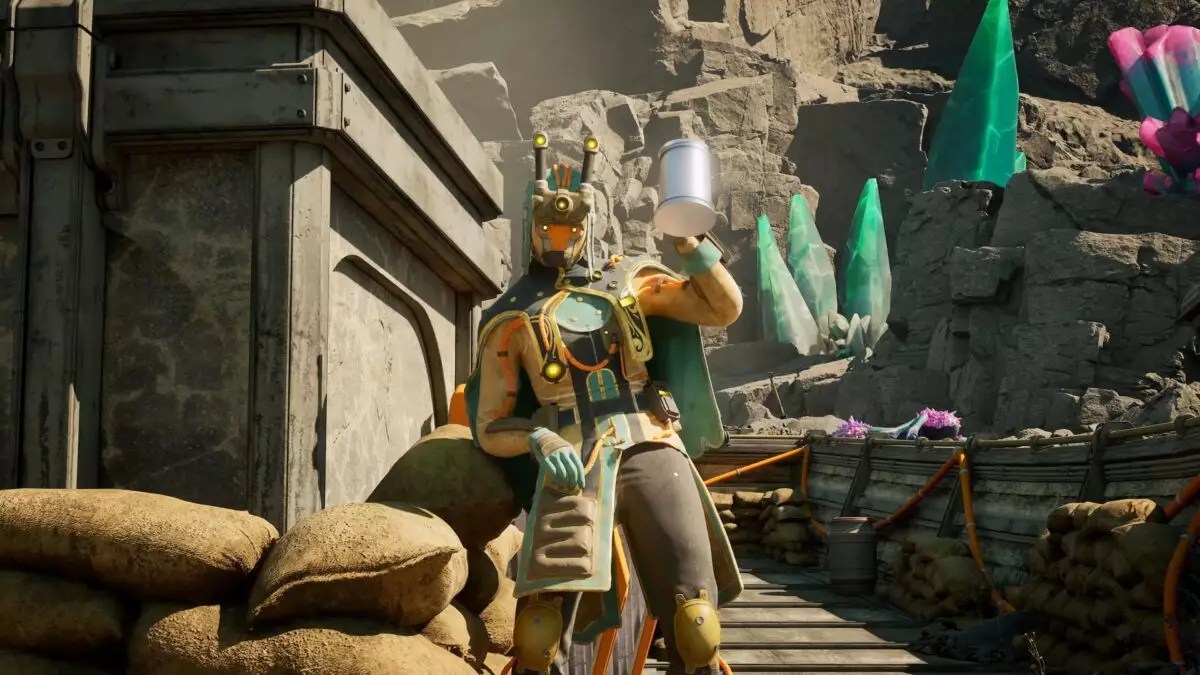While The Outer Worlds initially captivated many fans with its satirical tone and engaging storytelling, it ultimately fell short of redefining the role-playing game landscape. Despite receiving positive reviews and a loyal following, the game did not possess the revolutionary impact that Obsidian Entertainment’s previous hit, Fallout: New Vegas, managed to achieve. Critics and players alike recognized its charm but acknowledged its limitations—particularly in its RPG depth and complexity. As a result, many enthusiasts felt that the game was more a polished version of familiar mechanics than a trailblazing experience.
This sense of unfulfilled potential left some wondering whether the sequel could truly capitalize on the franchise’s strengths or if it would be another iteration constrained by cautious design choices. Nonetheless, with the announcement of The Outer Worlds 2, there’s a palpable shift in tone—a promise that the developers are listening and that the sequel aims to push the boundaries further.
Ambitions on a Bigger Scale
Previews for The Outer Worlds 2 paint a picture of a game that is unapologetically self-assured and ambitious. The decision to embrace more intricate RPG systems appears to be motivated by the renewed landscape of the genre, notably sparked by the success of titles like Baldur’s Gate 3. The developers now seem willing to embrace the core elements that define classic CRPGs—enabling players to approach problems and quests through multiple solutions based on their character’s design and choices.
Obsidian’s creative director, Leonard Boyarsky, has openly acknowledged the initial hesitations in marketing a mechanics-heavy RPG. Back then, the phrase “RPG with RPG elements” was often met with skepticism—highlighting how the industry treated traditional RPG mechanics as secondary to spectacle or narrative. However, with the increasing popularity of games like Baldur’s Gate 3, there’s now a more receptive audience eager to experience the depth and complexity of role-playing systems. This cultural shift offers Obsidian a fertile ground to finally realize their vision of a game that deeply immerses players in meaningful choices and nuanced character development.
Incremental but Meaningful Evolution
While the core of The Outer Worlds 2 appears to be rooted in its predecessor’s universe, the game’s development aims to expand and enrich the RPG experience rather than merely replicate it. The gameplay previews suggest a concerted effort to make the game feel more expansive and thoughtful—offering players layered interactions, branching narratives, and a variety of approaches to problem-solving.
Some fans worry that the sequel might not differ significantly enough to warrant their attention, citing concerns of incremental change. That skepticism is understandable—after all, an RPG’s value often hinges on innovations that fundamentally alter how players engage with its worlds and mechanics. However, other industry successes hint that when a game embraces systems-driven design—like Kingdom Come Deliverance’s commitment to historical immersion or Elden Ring’s open-ended build customization—the results can be transformative.
Elden Ring, despite its departure from traditional CRPGs, demonstrated how player agency and deep system mechanics resonate with a broad audience. This indicates that a game, to be impactful in today’s crowded market, must offer players meaningful freedom and depth—qualities that Obsidian appears eager to bring to The Outer Worlds 2.
Industry Dynamics and Creative Confidence
The financial backing from Microsoft reflects a commitment to elevating the Outer Worlds franchise and tackling the challenge of delivering a more substantial RPG experience. With more resources at their disposal, Obsidian’s team is arguably more empowered to explore complex systems without the fear of commercial failure that might have hindered them earlier.
This newfound confidence is not merely a matter of budget but also of cultural acceptance. As Boyarsky pointed out, the industry has shifted—games like Baldur’s Gate 3 have demonstrated that audiences are genuinely interested in layered role-playing experiences. It’s a validation of what hardcore RPG fans have long believed: that well-crafted systems and player choice are not only worthwhile but essential to a truly fulfilling RPG.
In a broader sense, this signals a potential turning point for the genre, suggesting that developers are willing to take risks and craft games that honor traditional RPG roots while still appealing to modern sensibilities. The Outer Worlds 2 could, therefore, serve as a beacon for a new era where complex mechanics and engaging storytelling go hand-in-hand.
—
The landscape of RPGs is at a crossroads, and The Outer Worlds 2 is positioned to be more than just a sequel—it could be the validation that a rich, system-driven experience remains relevant and desirable in an era dominated by blockbuster spectacle. If Obsidian leverages the industry’s shifting tides and their own creative talents, they might finally turn the promise of their early vision into a landmark achievement.


Leave a Reply